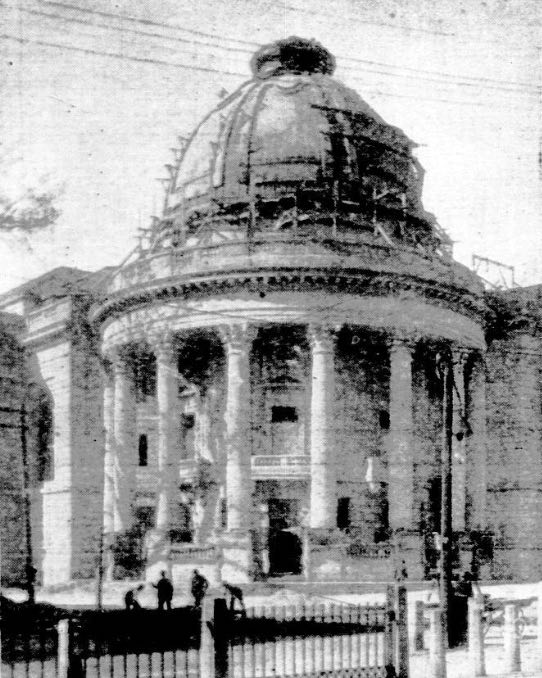
Imagine going up into the attic and finding a mummy stashed away in a box. I’d be freaking ecstatic, as was the Peabody Museum when the mummy of a boy was found, log forgotten, in their attic.

Mummy Found In Museum
Among Forgotten Curiosities At Yale For Half A Century
New Haven, March 7. — The interesting and unexpected find was made in the attic of the Peabody Museum at Yale a few days ago of a mummified Egyptian child, which had lain unknown to the museum authorities in a dust covered corner for nearly half a century. When brought to light during a rummage by the museum authorities for other exhibits the mummy was covered with the dust of generations of work in the Yale scientific collections. How it came to be deposited in such an out of the way corner is not known. From evidence on the box in which the mummy was cased there was reason to believe that for a considerable number of years before that time, even, the mummy had been packed away unnoticed.
Dr. MacCurdy, the curator of the anthropological curiosities in Peabody Museum, said today of the discovery that it was one of a kind that was continually being made in the museum, owing to the fact that all kinds of curios and rare relics had been received for years at the museum and had been stowed away, mostly unopened, some of them not even catalogued, because of lack of room in which to open them. The mummy child, however, was one of the most interesting of these unexpected finds. He was looking for some boxes of Flathead Indian skulls recently in the attic storeroom of the museum and came upon a box marked “Egyptian Antiques.” Bringing it to the light and opening it he found that it contained the mummy of a child about two feet long, that of some small animal, and of a human left hand, presumably that of a woman. A half inch of peculiar dust covered the relics, and when this was blown off there appeared the perfect mummy of an ancient Egyptian child, wrapped in fold after fold of costly fabric, now dropping to pieces with age. The cloth, the peculiar “mummy cloth” used by the ancient Egyptians in preserving bodies, was evidently painted with highly colored pigments, representing scenes from the life of the child, or possibly scenes which he might witness after death. On the face, and wrapped about it, was the usual costly terra cotta mask, which was used in cases of burial of the dead from high or wealthy families. This mask, most of which had crumbled with its great age and the climate of America, was originally meant to represent the human face. It had painted on it the human features, with eyes, nose and mouth in relief, the face represented by flesh tints, the hair by black paint.
Next to the mummy child was that of some animal, which was probably entombed at the same time with the child, and was according to Dr. MacCurdy, probably a pet of the child. What this was in life, however, could not be said, the body being wrapped closely with mummy cloth. That it was a pet cat, parrot, or some other household animal or rid seems most probable, as it was a custom of the Egyptians to bury pets with the dead. The mummified hand found in the box probably did not belong to the tomb where the child and animal were found, but was from some other place. It is a woman’s left hand, dried and preserved in a remarkable state.
The history of the mummies prior to the time when they came into the possession of the museum is a mystery. They date probably to the time of one of the later Egyptian dynasties, a century or two before Christ. No inscription has yet been found by which to identify them with any special epoch in Egyptian history, but such may be found if the body of the child or of the animal is unwrapped from the cloth which was put around it more than two thousand years ago. To discover just what the mummies are X-ray photographs will be taken in a week or two, and from these it is expected that any ornaments or metal pieces, as well as the bone structure of the bodies, will be ascertained.

The box in which this unusual discovery was made was presented to Yale in 1858 by the Rev. Lyman Coleman, of the class of 1817. As the Peabody Museum was not opened until 1876, and the box was never uncovered, it had lain among forgotten relics of the scientific collections of the university for nearly half a century. Both in the cellar and attic of the museum are rows of unopened boxes, and among these are probably hundred of valuable relics that will some day come to light.
Source: New York Tribune. Newspaper. March 08, 1903.

